Delimitation and Democracy: Fair or Flawed?

Context:
- The first meeting of the JAC attended by CMs of States adopted a resolution demanding that the freeze on the parliamentary constituencies based on the 1971 Census population be extended by another 25 years.
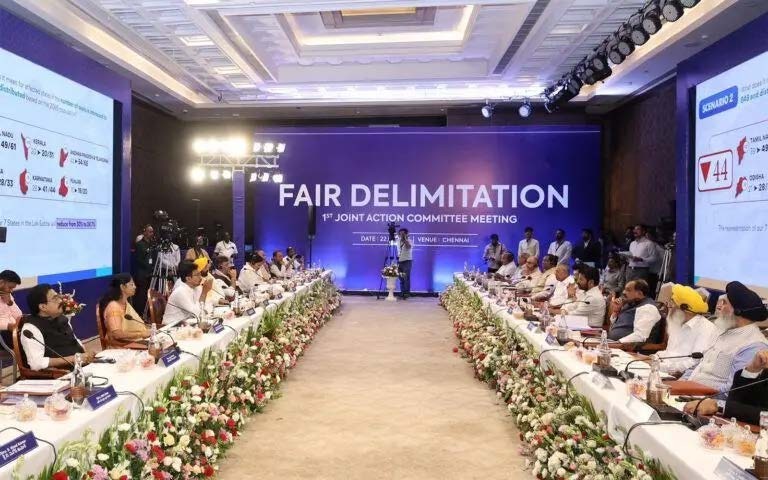
1.
What is Delimitation?
- The process of delimitation in India is guided by the Constitution, which mandates periodic reallocation of parliamentary and state assembly constituencies based on population changes.
- This ‘delimitation process’ is performed by the ‘Delimitation Commission’ that is set up under an act of Parliament.
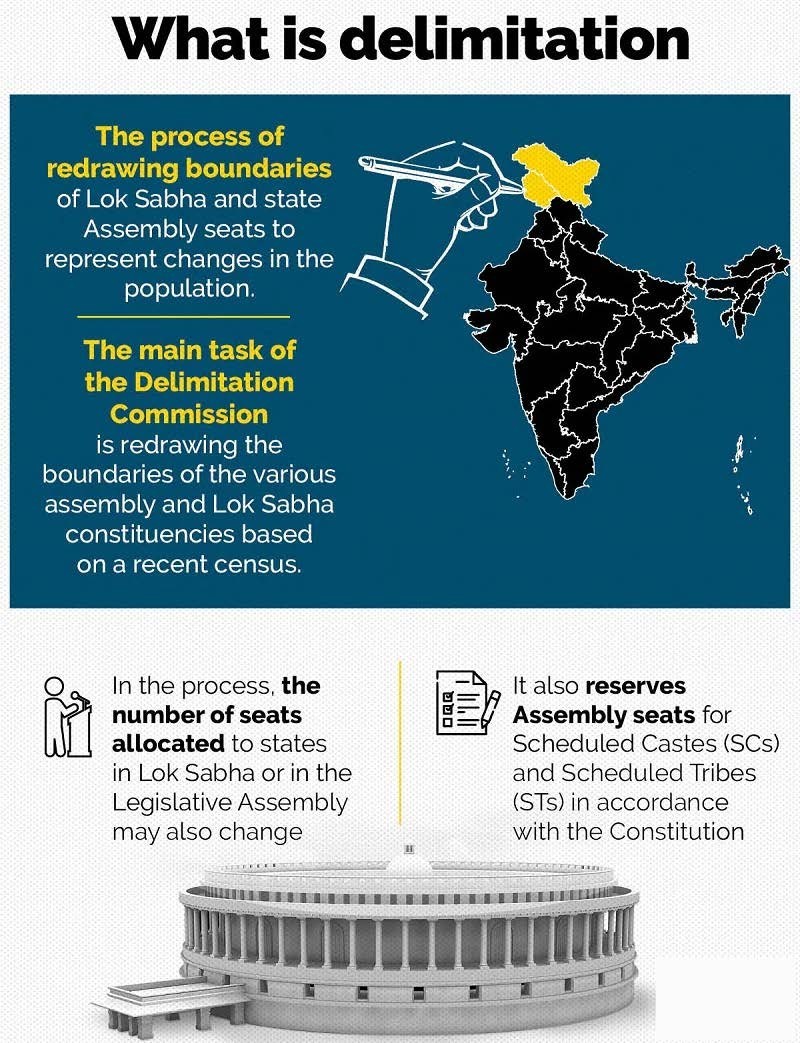
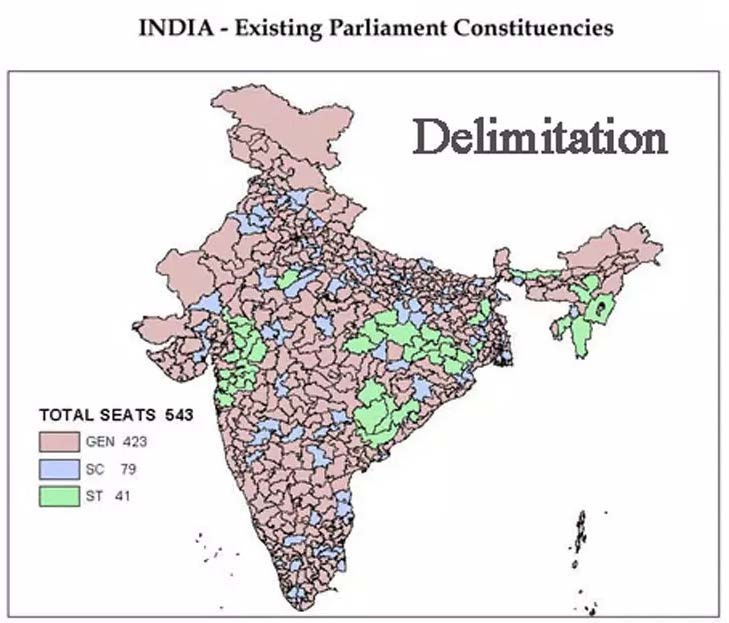
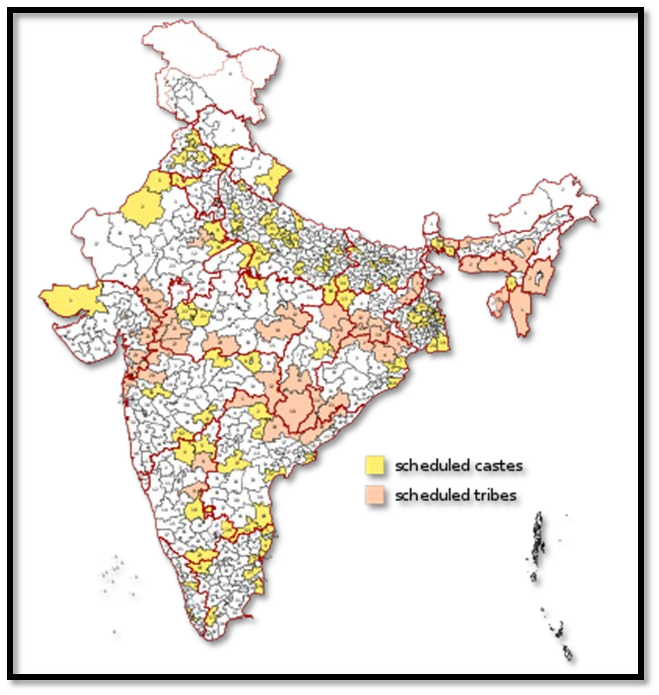
2.
What is the history of Delimitation in India?

- India conducted delimitation exercises in 1951, 1961, and 1971 before freezing the process in 1976 through the 42nd Amendment Act.
- This move aimed to encourage population control and prevent states with high growth rates from gaining an electoral advantage.
- The freeze was extended in 2001 through the 84th Amendment, postponing delimitation until 2026.

| Delimitation Exercise | Description |
|---|---|
| 1952 |
|
| 1963 |
|
| 1973 |
|
| 2002 |
|
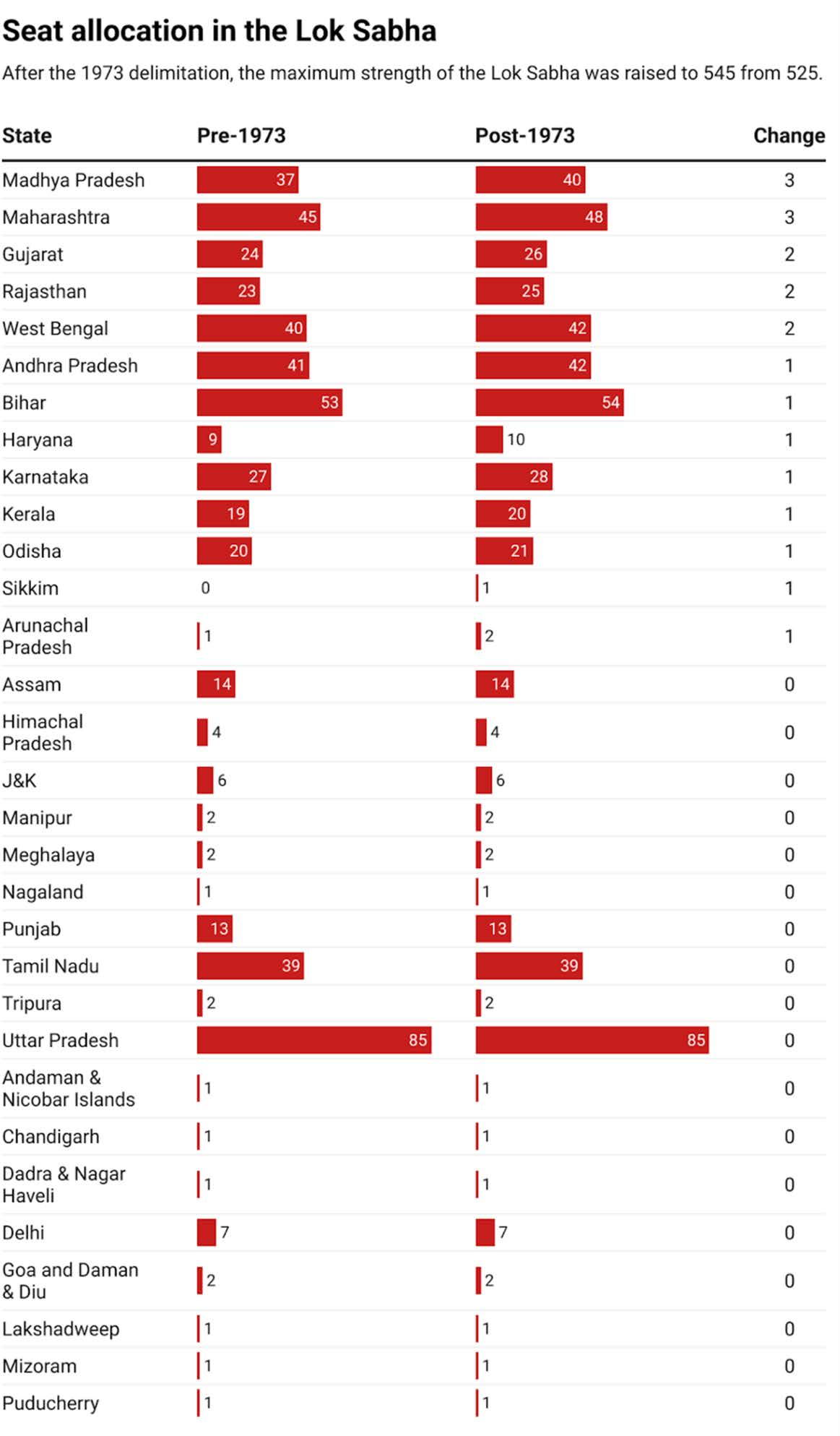
3.
What are constitutional provisions for Delimitation?
| Articles | Provisions |
|---|---|
| Article 82 |
|
| Article 170 |
|
| Article 330 |
|
| Article 332 |
|
| Article 329 |
|
4.
Enlist amendments made to Delimitation in India?
| Amendments | Description |
|---|---|
| 31st Amendment Act, 1973 |
|
| 42nd Amendment Act (1976) |
|
| 84th Amendment Act (2001) |
|
| 87th Amendment Act (2003) |
|
5.
What is the current status of parliamentary constituencies in India?
- Delimitation means the process of fixing the number of seats and boundaries of territorial constituencies in each State for the Lok Sabha and Legislative assemblies.
- The number of seats in the Lok Sabha, based on the 1971 Census, was fixed at 543, when the population was 54.8 crore.

6.
What is the Delimitation Commission?
- The Delimitation Commission is an independent body established through a Parliamentary Act, is responsible for overseeing the process of Delimitation.
- The Delimitation Commission is appointed by the President of India and works in collaboration with the Election Commission of India.
- It is a high powered 3 member body composed of a serving or retired Supreme Court judge as chairperson, the Chief Election Commissioner, and the State Election Commissioners of the concerned states.
- The authority, and its decisions cannot be challenged in court. The Election Commission of India (ECI) provides technical assistance for the exercise.
- However, the Supreme Court has ruled in 2024 that delimitation orders can be reviewed if they violate constitutional values.
7.
How is delimitation done?
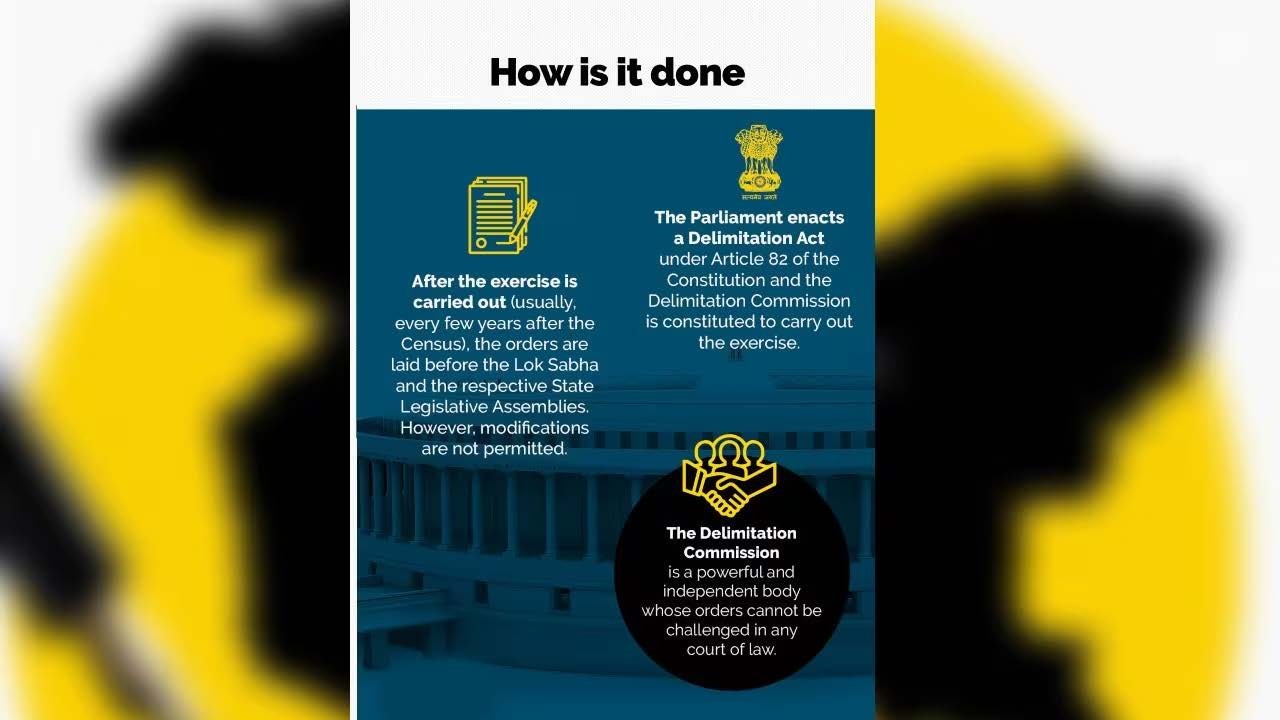
- The delimitation of Parliamentary and Assembly constituencies was done according to the procedure laid down in the Delimitation Act, 2002.
- The Election Commission of India (ECI) has informed that in accordance with the provisions of the Delimitation Act, 2002 (33 of 2002), the Delimitation Commission received assistance in redrawing boundaries from State Election Commissioners, Chief Electoral Officers and Associate Members from the States concerned as well as with the Registrar General & Census Commissioner of India and simultaneously suggestions were also taken from stakeholders.
- The State Governments have no role in redesigning the borders of constituencies.
- The seats for Scheduled Castes and Scheduled Tribes were reserved as per the Constitutional and Legal provisions i.e. articles 330 and 332 of the Constitution of India read with sections 9(1)(c) and 9(1)(d) of the Delimitation Act, 2002.
- As informed by the ECI, under the provisions of the Delimitation Act, 2002, the then Delimitation Commission had conducted public sittings in all concerned States/Union territories to hear the suggestions/ objections received from the public/political parties/organisations or otherwise w.r.t. its draft proposals published in the Central and State Gazettes.
- Further, after consideration of all suggestions/objections as received w.r.t. draft proposals or in the public sittings, the Delimitation Commission published its final orders in the Central and State Gazettes for public information.
8.
Why was Delimitation frozen in 1971?
- No fresh delimitation has occurred since 1971 because the 42nd Constitutional Amendment Act in 1976, and later the 84th Amendment Act in 2002, froze the number of Lok Sabha and Assembly seats based on the 1971 census, citing family planning as a reason.
- The government cited the need to encourage family planning policies, arguing that states with higher population growth rates would not be penalized in terms of political representation.
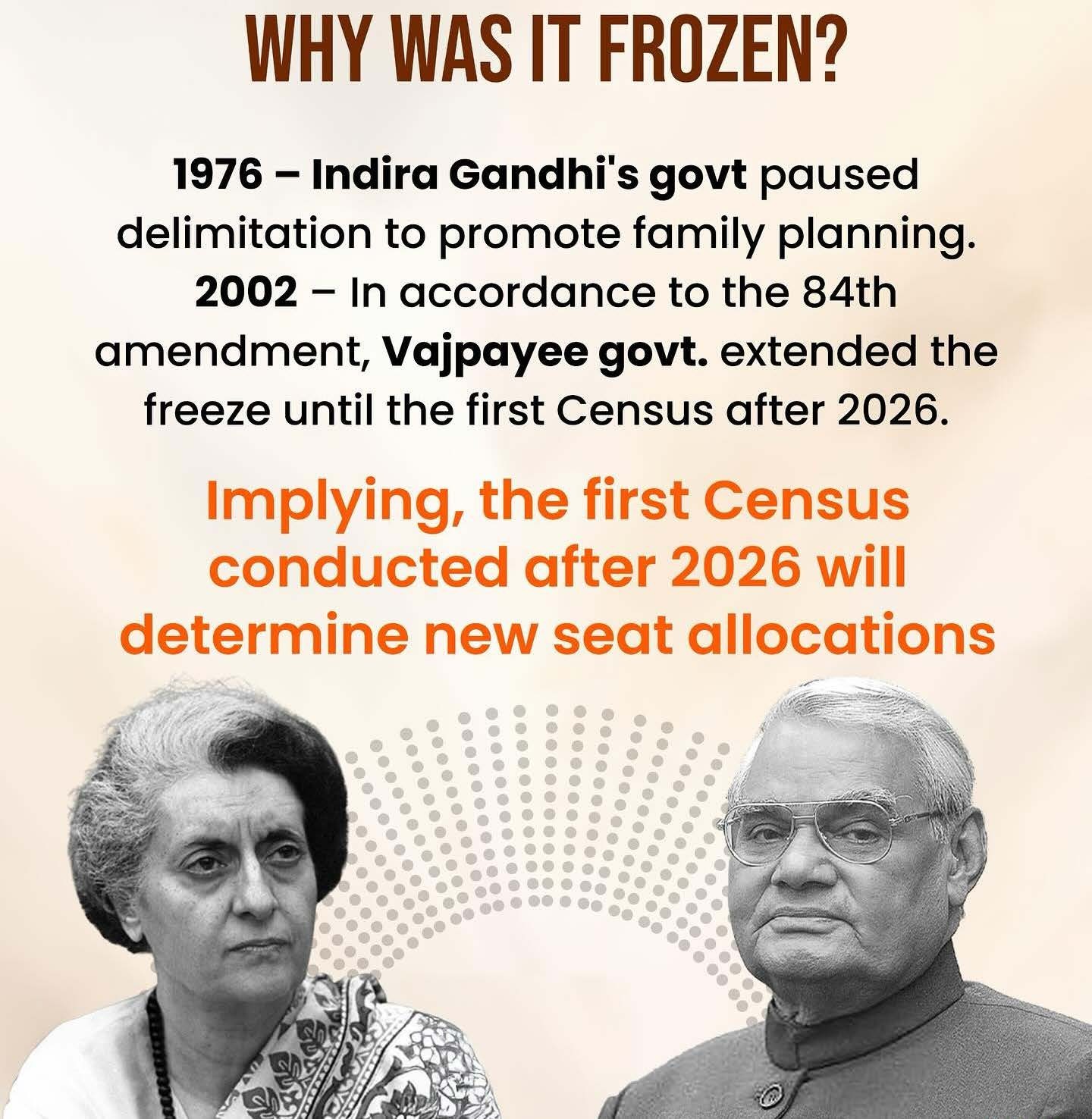
9.
What is the demographic status of states?
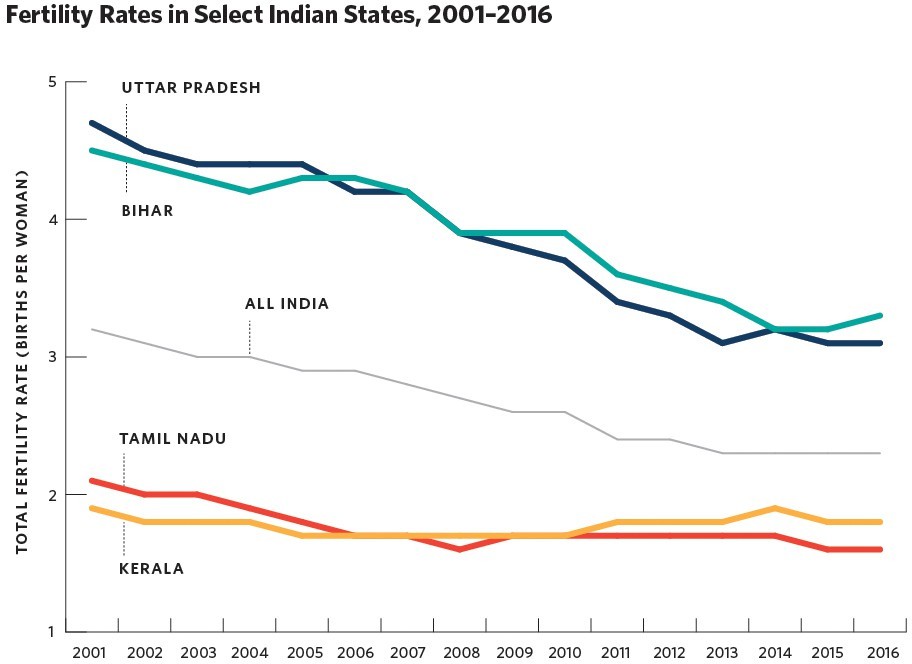
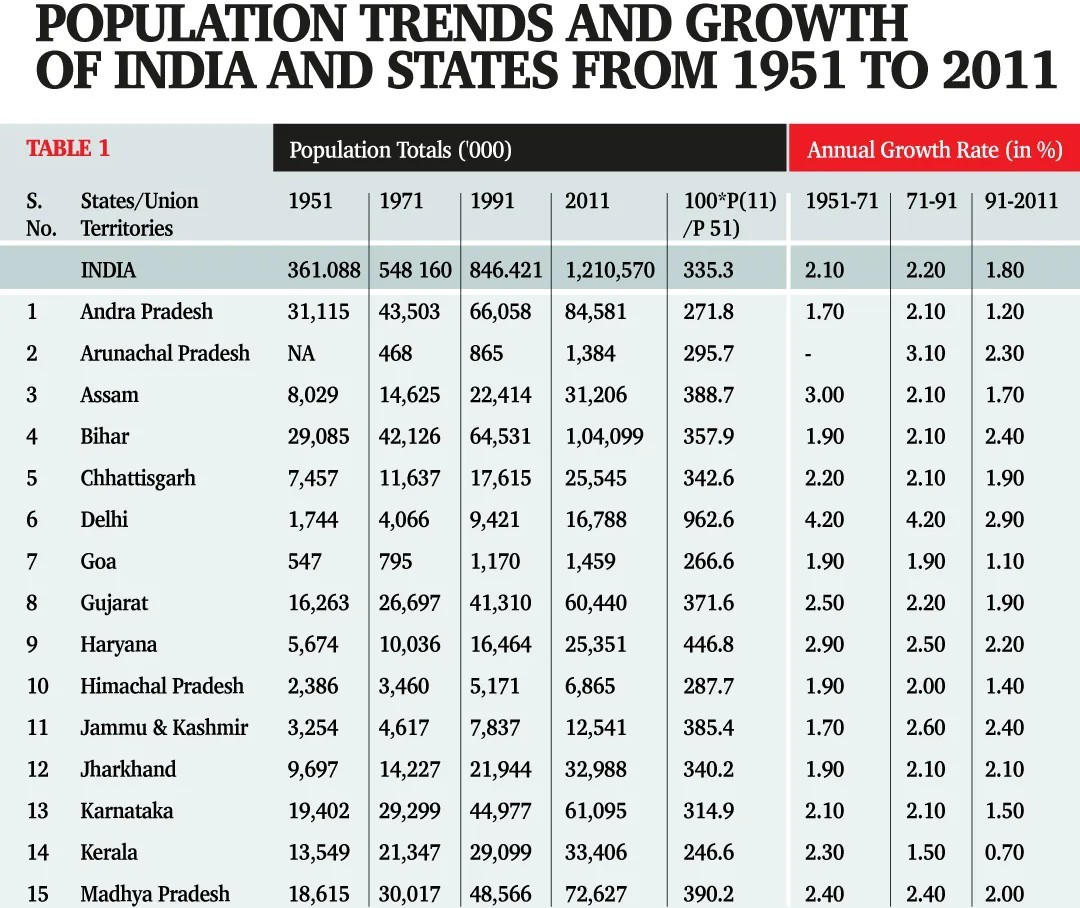

10.
What can be the potential Lok Sabha seats distribution after 2026 Delimitation?
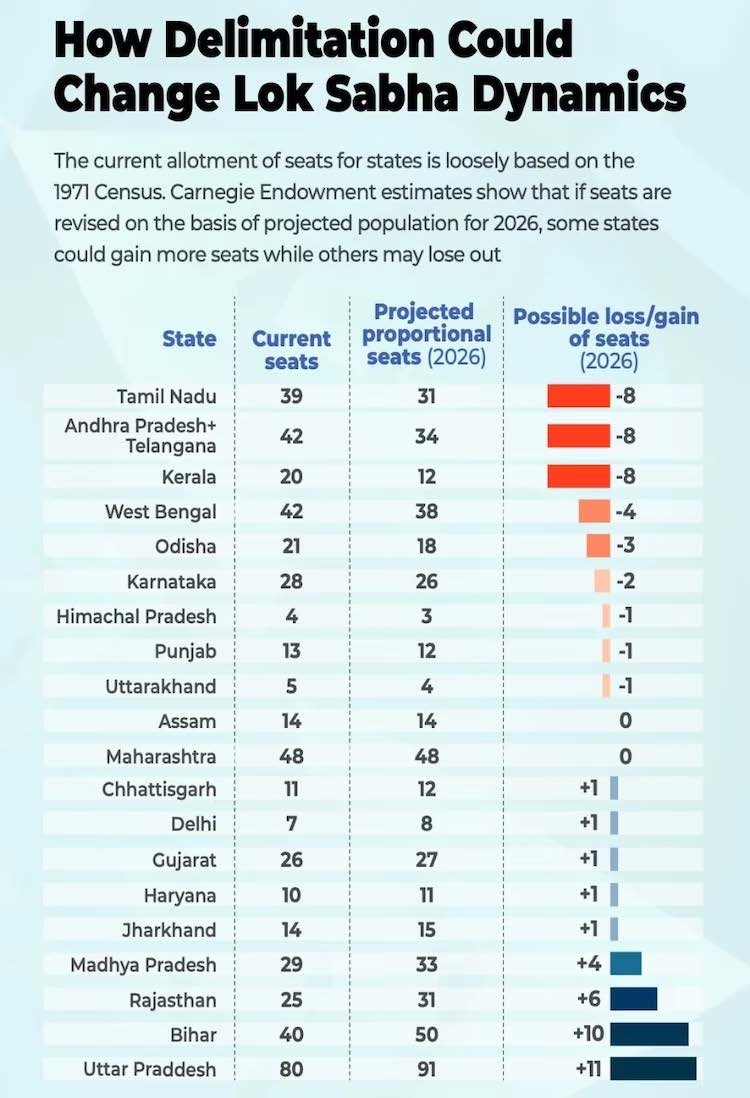
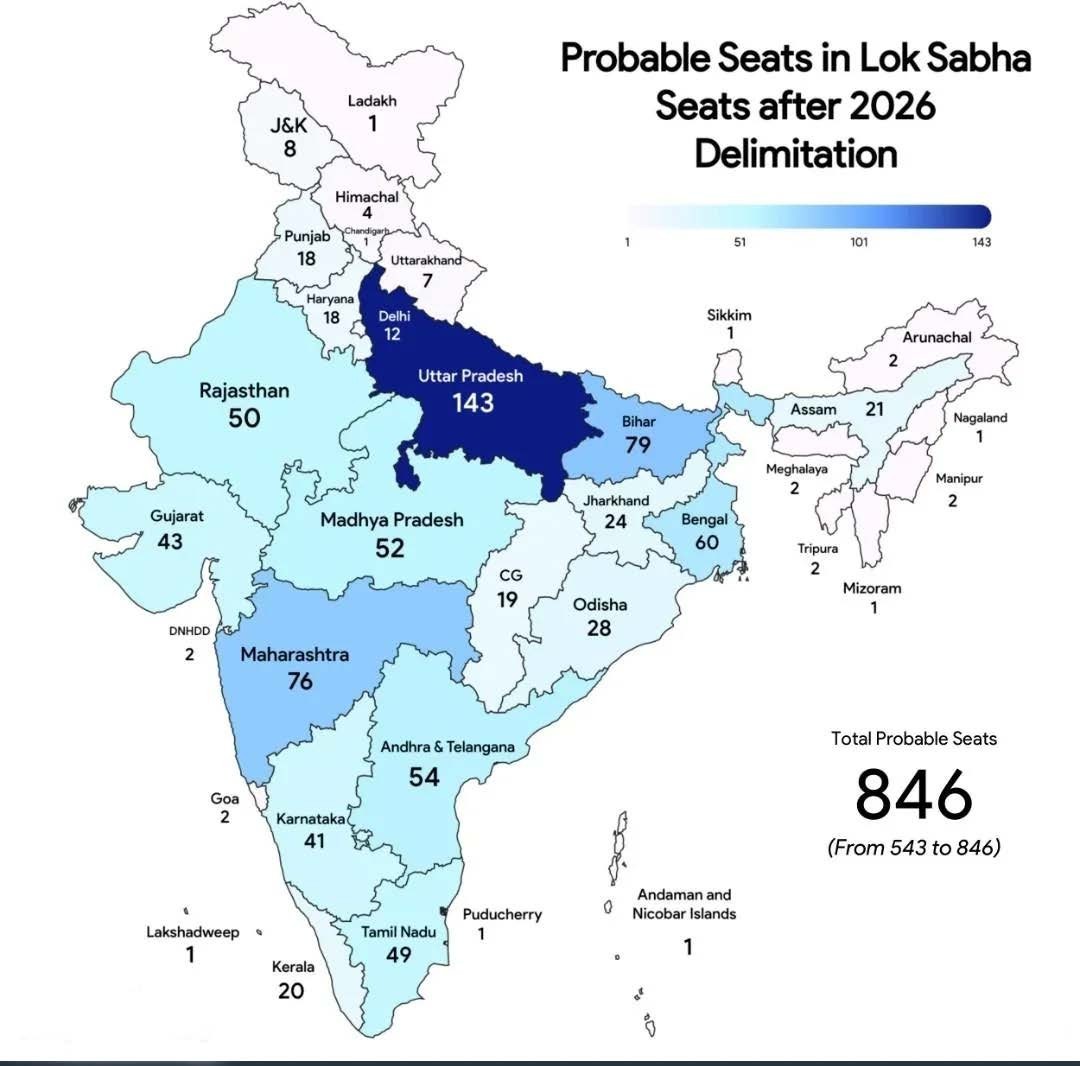
11.
Enlist states that will gain or lose seats?
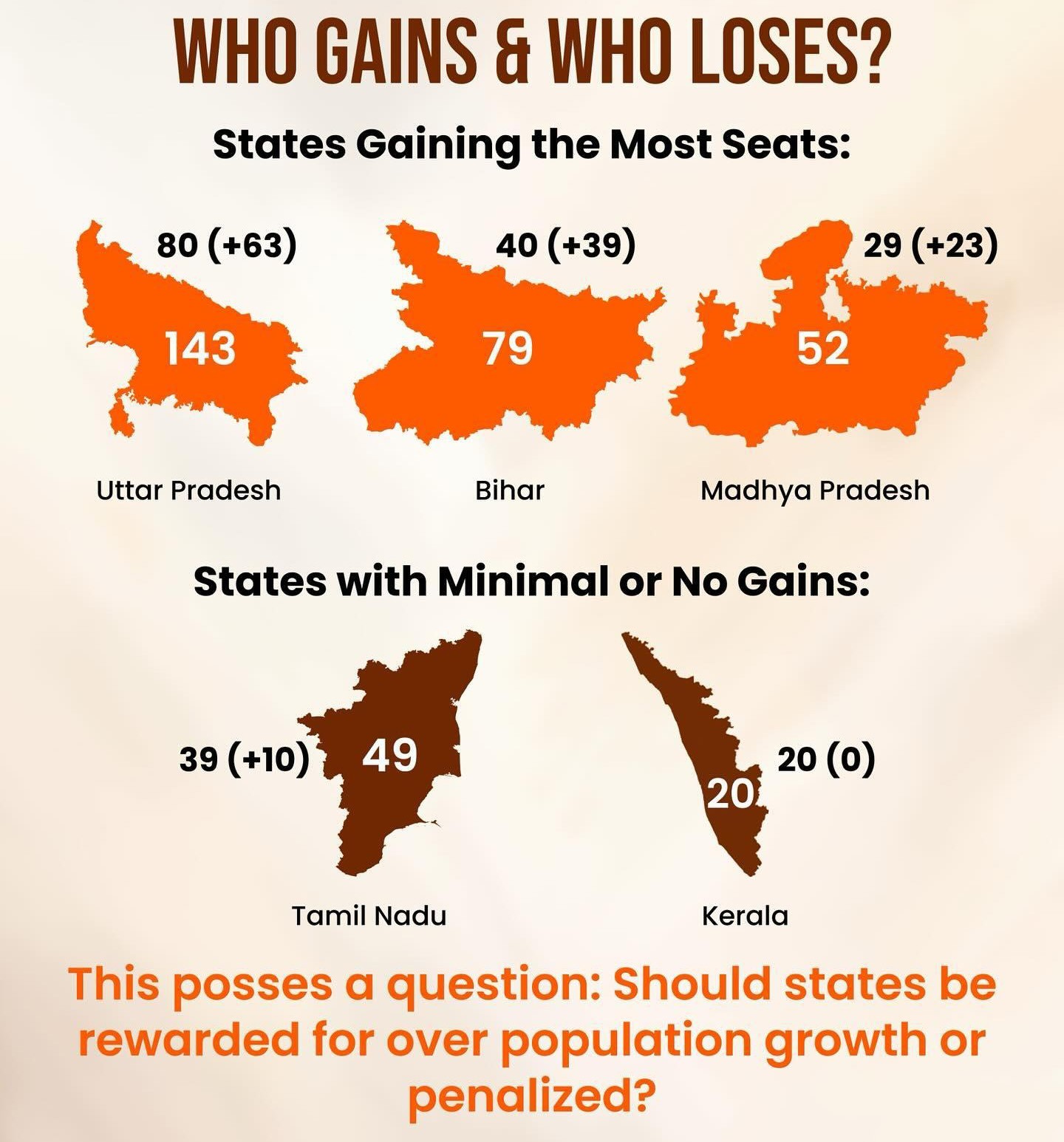
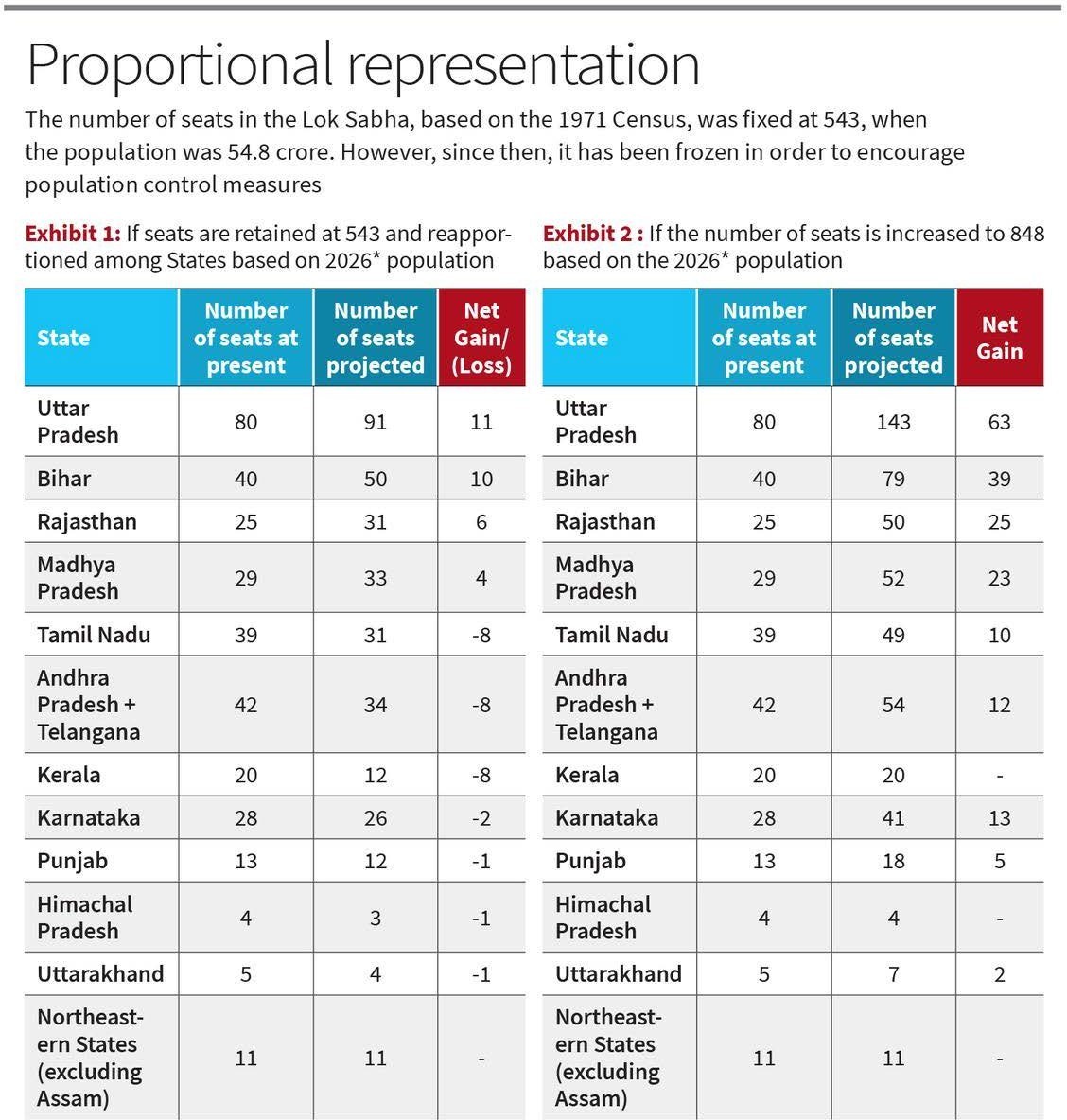

12.
What is the Significance of Delimitation?
| Significance | Analysis |
|---|---|
| Constitutional Mandate |
|
| Ensuring Proportional Representation |
|
| Ensures Equity |
|
| Reservation of seats for SCs and STs |
|
| Maintaining Federalism |
|
| Addressing Population Growth |
|
13.
What are the concerns raised due to the Delimitation exercise?
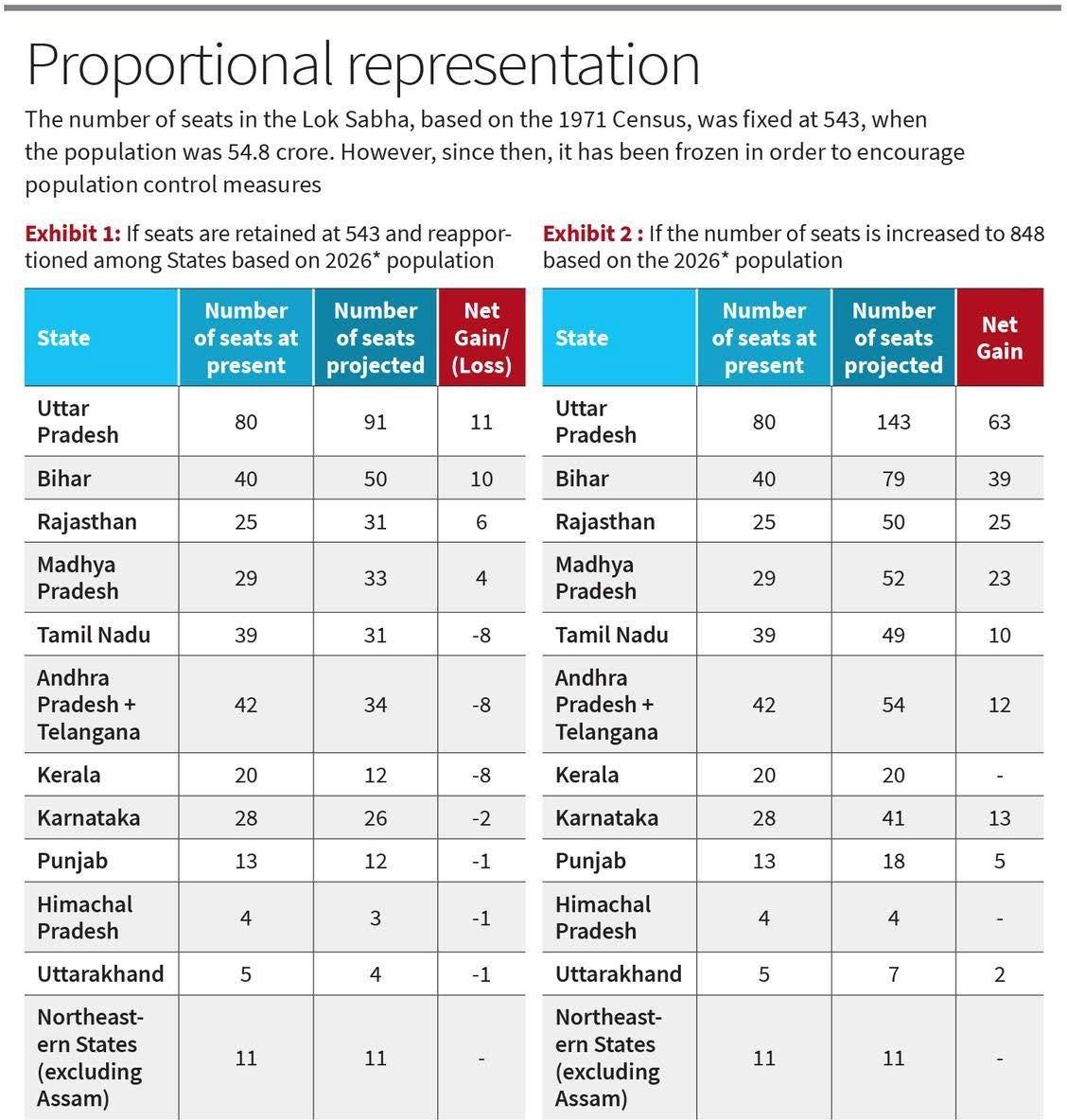
| Concerns | Description |
|---|---|
| Disparity in Political Representation |
|
| Impact on the Federalism |
|
| Loss of Influence for Regional Parties |
|
| Urban vs. Rural Disparity |
|
| Impact on Reserved Seats for SC, ST, and Women |
|
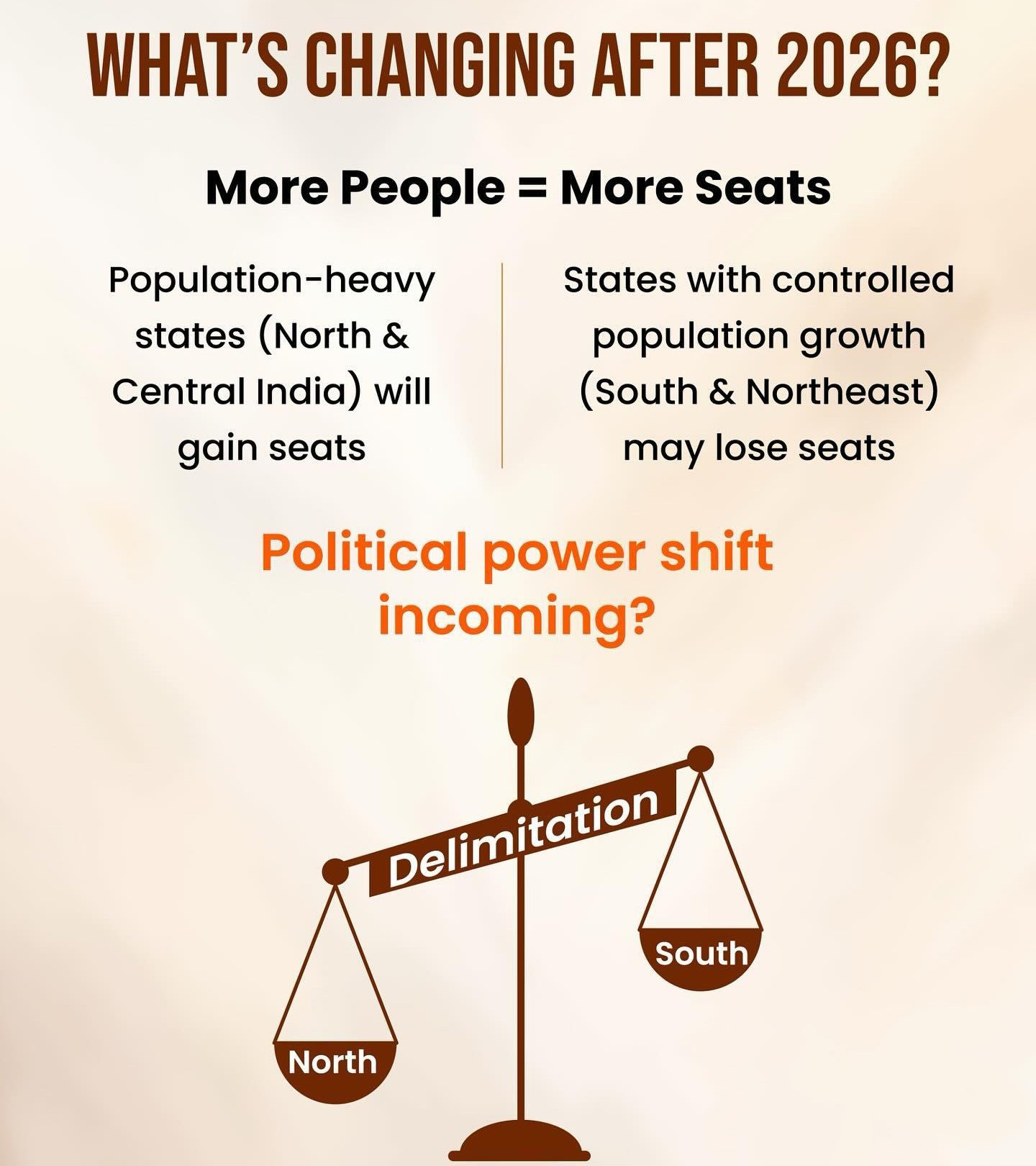
14.
Why are southern states concerned with the upcoming Delimitation exercise?
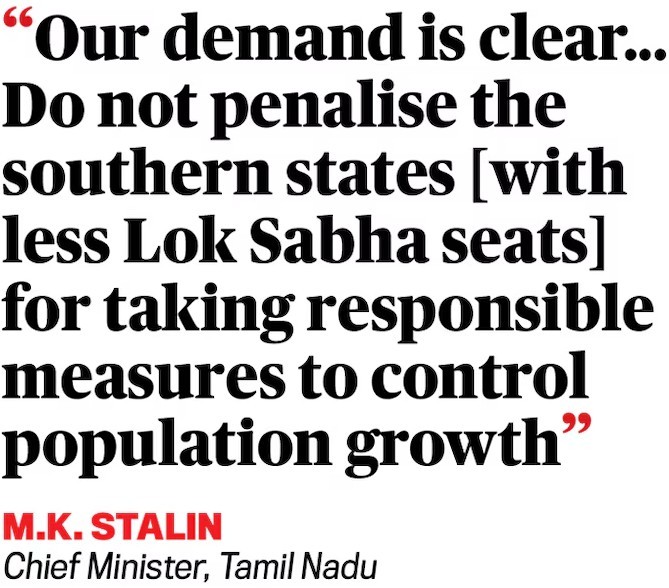
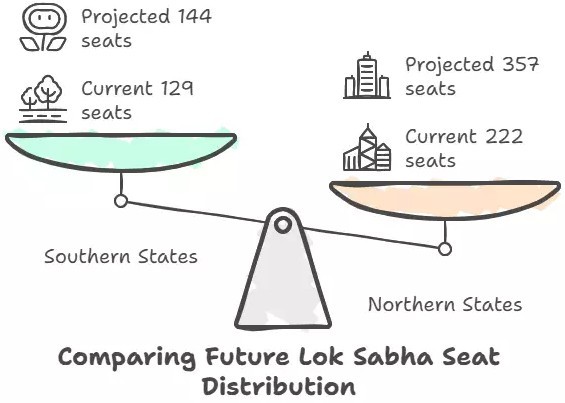
| Reasons for concern | Analysis |
|---|---|
| Reduced political influence |
|
| Economic contribution vs representation |
|
| Women’s Reservation Act & SC/ST reservations |
|
| Gerrymandering |
|
| Discouragement to Good Governance |
|
Good Governance Index:
- The index was prepared by the Department of Administrative Reforms and Public Grievances (DARPG), Ministry of Personnel, Public Grievances and Pensions.
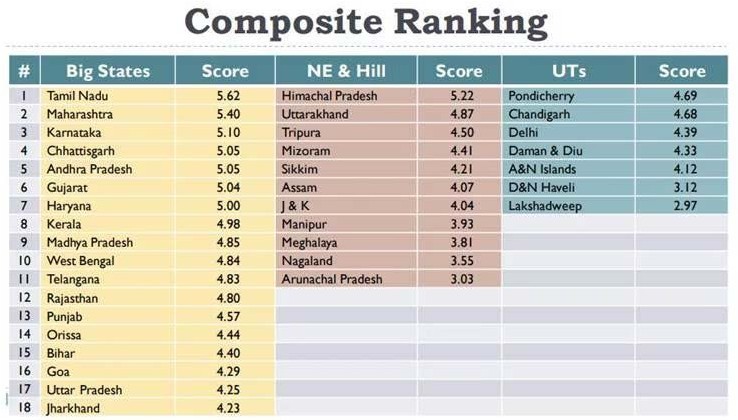
15.
What are the demands of the southern States?
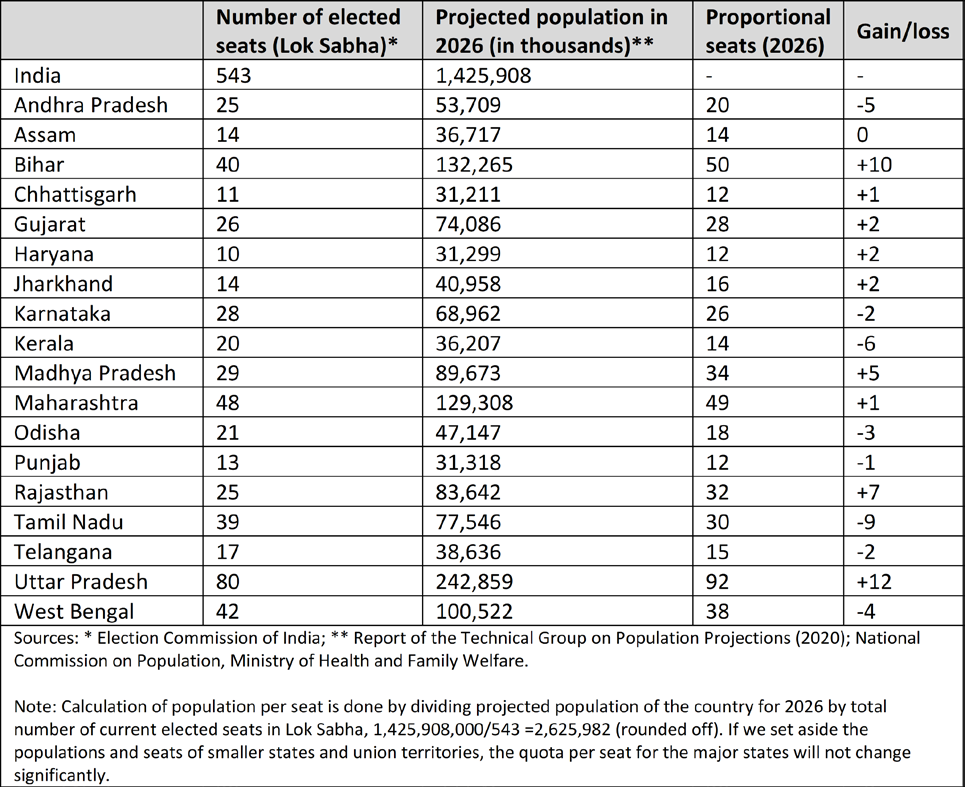
- Southern states argue that a delimitation exercise based solely on population will reduce their political representation in Parliament.
- They question why they should be penalised for successfully implementing population control measures, while states that have not made similar efforts will be rewarded.
- The southern states want the freeze to be extended till 2056, to allow for proper implementation of population stabilisation measures in states such as Uttar Pradesh, Bihar, and Jharkhand.
- If the number of seats remains fixed at 543 and delimitation is based on post-2026 population figures, southern India could lose over 20 seats, which may be redistributed to northern states.
- Even with an increase to 848 seats, Uttar Pradesh could gain over 60, while the entire southern region would receive fewer than 40 additional seats.
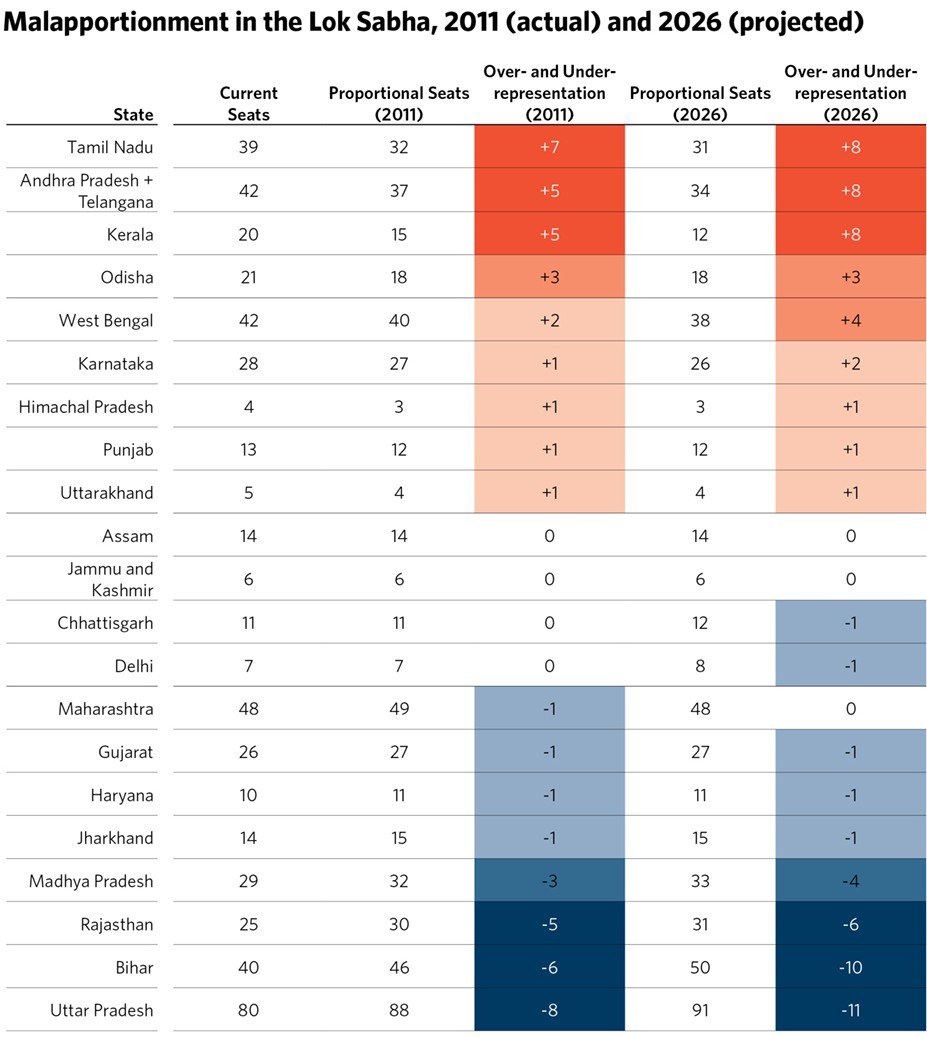
16.
What is the Centre's view on concerns raised over delimitation exercise?
- The Centre’s stance on the issue remains unclear. The only official statement so far came from Union Home Minister Amit Shah, who assured that no southern state would lose seats but would instead gain additional constituencies on a pro-rata basis.
- However, political parties are seeking clarity on whether the prorata distribution will be based on the current seat percentage or on the population figures.
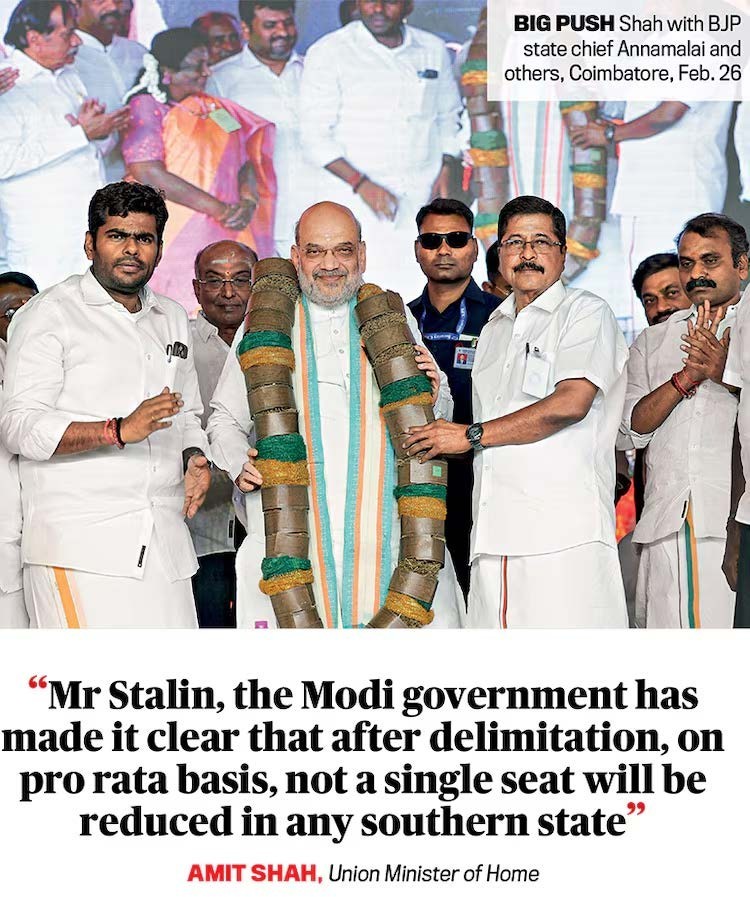
17.
What alternative approaches can be considered?
| Approaches | Analysis | Advantages |
|---|---|---|
| Multi-factor Representation Model (Population + Economic Contribution + Governance) |
Formula for Seat Allocation: Factors Considered:
|
|
| Balanced Representation for LowGrowth States |
Implementation:
|
|
| Increase Lok Sabha Strength Instead of Redistributing Seats |
Implementation:
|
|
| Rajya Sabha as an alternative channel |
Implementation:
|
|
| PerformanceBased Governance Incentives |
Implementation:
|
|
| Delimitation Freeze Until 2041. |
|
|

18.
Enlist a few International Practices Related to Delimitation?
| Countries | Process of Delimitation |
|---|---|
| USA |
|
| European Union (EU) |
|
What is the relevance of the topic for UPSC CSE?
For Prelims: Delimitation Exercise, Lok Sabha, Legislative Assembly, Chief Election Commissioner, Special Status, Finance Commission.
For Mains: Key features of delimitation. Associated concerns of southern states wrt upcoming delimitation and way forward.
Some Previous Years Prelims Questions
Q1. How many Delimitation Commissions have been constituted by the Government of India till December ?(2023)
(a) One
(b) Two
(c) Three
(d) Four
Some Previous Years Mains Questions
Q1. Discuss the procedures to decide the disputes arising out of the election of a Member of the Parliament or State Legislature under The Representation of the People Act, 1951. What are the grounds on which the election of any returned candidate may be declared void? What remedy is available to the aggrieved party against the decision? Refer to the case laws.(2022-15 Marks)
Q2 Discuss the role of the Election Commission of India in the light of the evolution of the Model Code of Conduct.(2022-15 Marks)
Some Questions from This Year and Previous Years Interview Transcripts
Board Dinesh Dasa sir:
- What is the issue of delimitation in the country
- How can it be solved?
Board BB Swain Sir:
- What is delimitation? Concerns with it?
- What is the relationship of delimitation with the Women's Reservation Bill?
- Why are Southern states concerned about delimitation? Any suggestions to resolve?
- Why is the census needed?
Board BB Swain sir:
- What is delimitation & what are controversies around it ?
- What steps has the Govt taken to address delimitation controversies?
Board BB Swain sir:
- What is delimitation?
- What are the Constitutional provisions wrt Delimitation?
- Why was it frozen?
- Till when it is frozen?
Some Questions for QUIZ
Q1. With reference to Delimitation Commission consider the following statements:
1. It is appointed by the Parliament and works in collaboration with the Election Commission of India.
2. The Constitution has provided to establish a tribunal for resolving the dispute arising out of the orders of the Commission.
3. The Delimitation Commission is mandated to identify the seats to be reserved for Other backward Classes (OBCs) in every state.
Which of the statements given above is/are incorrect?
(a) All are incorrect
(b) 1 and 3 Only
(c) 1 and 2 Only
(d) 2 and 3 only
Some Questions for POLL
Q1. Do you think Delimitation should not be solely based on population?
(a) YES
(b) NO
(c) Can’t say
Q2. Should India freeze the parliamentary constituencies based on the 1971 Census population by another 25 years?
(a) YES
(b) NO
(c) Can’t say